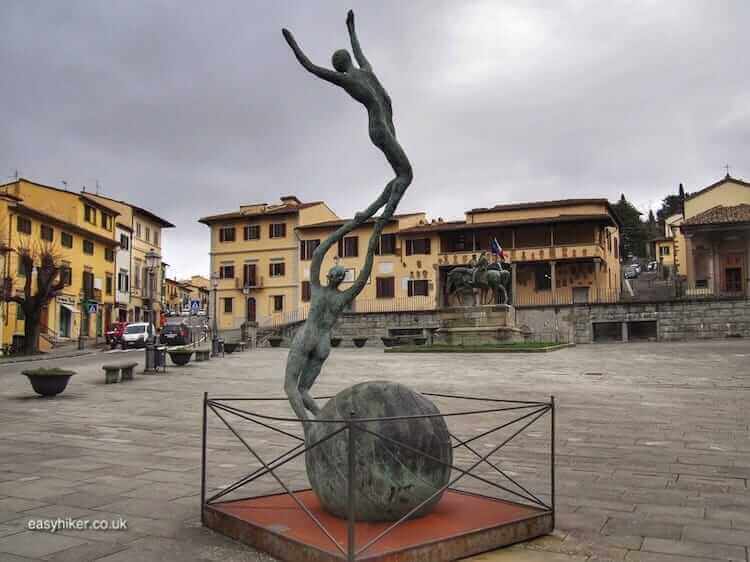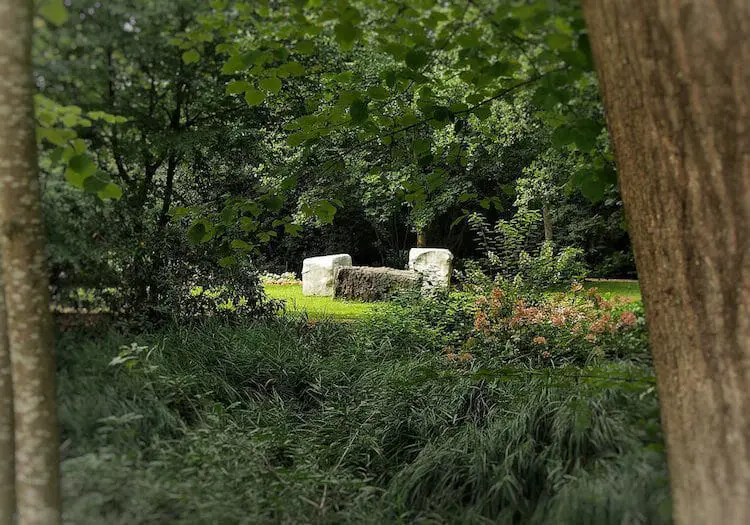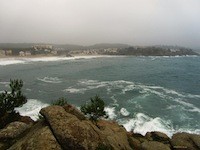1. Bring a rain coat – and a sweater
If you are planning a trip to Lisbon, here are a few notes on travelling to Portugal that you may find useful.

The weather in Southern Europe is not always what people from the North expect. As a rule of thumb: winters are wetter than you think, and springs are colder and wetter.
More generally speaking, the weather in the South of the continent is as unpredictable as it is in the North save for the four months of the Mediterranean summer (June to September).
Portugal, on top of that, is a special case. The prevailing western winds are coming in straight from the Atlantic, and as soon as they hit dry land, they want to discharge all the water they have soaked up on their 5000-mile journey.
Also bear in mind that Portugal is technically not a Mediterranean country and therefore fails to benefit from the Mediterranean Sea’s warming influences. The country may share its latitudes with Sicily and southern Italy but is probably best understood as the Ireland of the South.
2. Do not spend your holiday in queues
Portugal is good at attracting tourists, but not so good at handling them. Occasionally, Lisbon in particular seems overwhelmed by sheer numbers: I have never been to a tourist destination with so many queues.

Are these queues the result of poor crowd management, is Lisbon simply “over travelled, or do visitors concentrate in the same spots because there are not enough top-grade attractions to disperse them?
I went through all of these possible explanations in my head but remain flustered. Maybe it is a case of “all of the above”, to some degree at least, but whatever the underlying causes may be: the fact remains that, if you are not careful, you can easily spend half of every day in a queue.
So what can you do? For starters, you may want to cut down the number of tourist attractions you are going to visit. The Elevador de Santa Justa, for example: give it a pass. You can easily make your way around it and access the viewing platform on top …
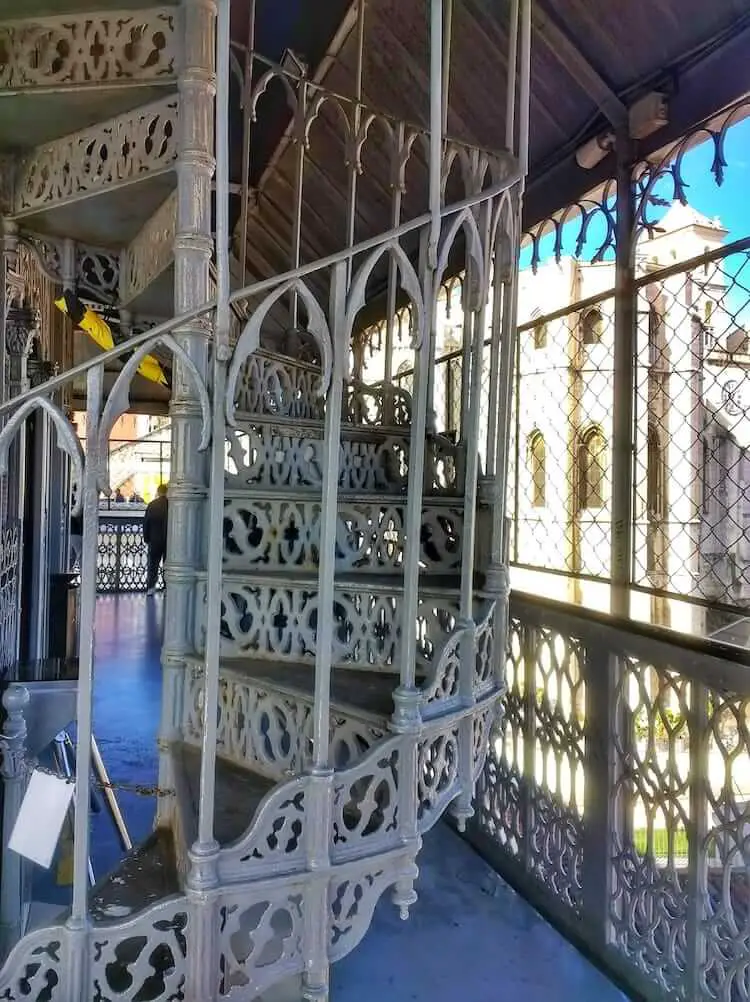
… by walking to the upper street level. It may be a bit tricky to find the route, but this saves time nevertheless and is more fun, too.
And if there is an attraction that you really, really want to visit: come early, at least 15 minutes before opening time. Every minute you spend waiting before the doors open will bring you rich rewards, cutting down your total waiting time by multiples of your time investment.
Conversely, the worst time to join a queue in front of a museum or a church is just after the first batch of visitors has been admitted: the place is now full, and no more people from the queue will be admitted until folks from the first batch start leaving.
3. The Tramway 28 is an underwhelming experience
Lisbon’s two longest queues can be found on the Praca Martim Moniz and the Praca Luis de Camoes, the end points of the Eletrico 28. I may not know why there are so many queues in town but I have an idea why these two are the longest: the tramway is one visitor attraction that you can enjoy with your family for a total outlay of 5 Euros, whereas elsewhere you will be lucky to get much change for a 100.
The problem is that this cheap thrill is not much of a thrill at all and interesting only for the brief stretch through the Alfama quarter where the train passes in touching distance of entrance doors and kitchen windows – so close that, if you reach out from the tram porthole, you can knick food from people’s dinner plates.
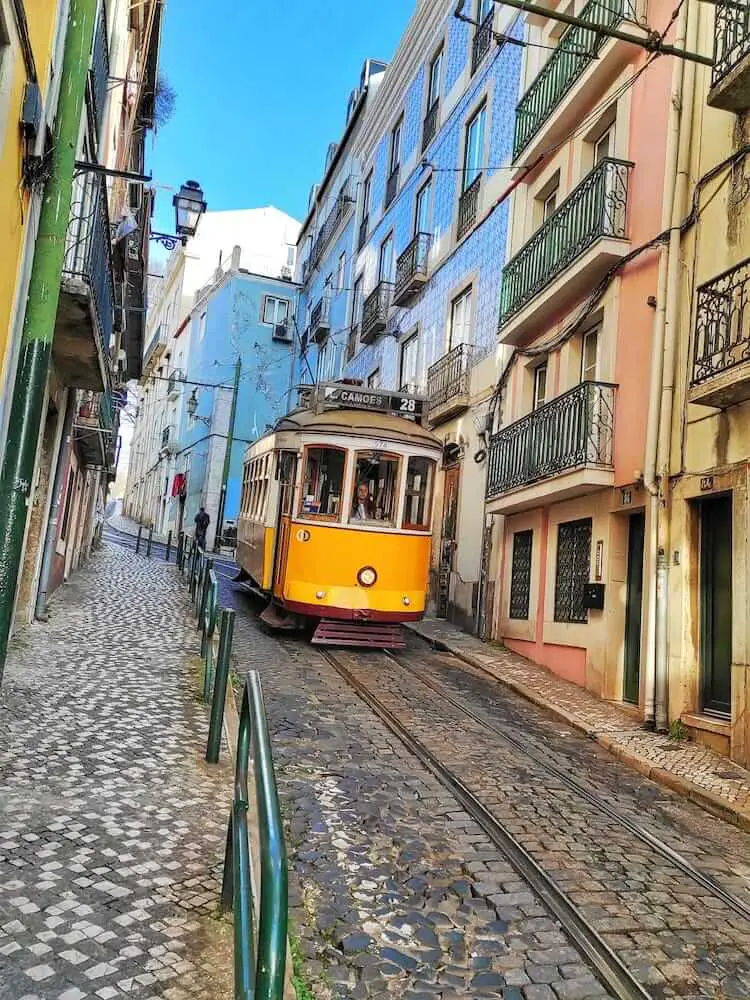
This stretch of the ride is exciting all right, and not only for kleptomaniacs. The rest, however, is about as thrilling as a streetcar ride through residential streets can possibly be.
Even if you have a seat, you will only see what is on your side of the street because the view to the other side is blocked by all the people who are crammed into the middle. And if you yourself are standing, you see even less, due to the angle of your sightline. Tramways, lest we forget, were designed to take commuters from A to B, not to provide visitors with panoramic views.
But if you feel you must go: do not line up at either of the end points but make your way to the second or third stops. Most drivers do not fill up their cars to the last standing place, leaving room for local residents along the route who may need the tram to go to work, a medical appointment or whatever. It is easy to see in which direction the trams will be heading: the tracks always give it away.
4. Do not pay public transport tickets with your credit card
It is tempting to forgo the purchase of a multi-journey ticket for Lisbon’s public transport system (you avoid the risk of paying in advance for tickets you will never use), and everywhere you go, you are encouraged to make use of the “easy option” of paying directly with your credit card. So we did – until we saw (in our credit card statement) that we had been charged € 3.20 instead of the € 1.80 a ride costs on the multi-pass.
Portugal, you are given to understand, is short of cash, and tourists are made to foot the bill. In principle, this is fine by me (and part of the deal, to be honest), but there are certain red lines.
For example: the ticket for the bus from Sintra train station to the Pena Palace, Portugal’s top visitor attraction (where all passengers are tourists), costs 4 Euros, more than the ticket for the 1-hour train ride to Sintra on Lisbon’s commuter network.
So far, so good. But could the Pena Palace then not offer its elderly and handicapped visitors a complimentary bus ride from the ticket office to the palace gates rather than charging them an additional 5 bucks on top of the 20-Euro admission fee?
5. Portugal is a poor country
So after having spent much of your day standing around in queues, feeling fleeced every time you reach into your pocket to pay for something and getting your feet wet in a spring downpour, you may be forgiven for feeling a bit grumpy. But there are also reasons for taking a more charitable view.
Portugal is a poor country, the poorest in Western Europe. Much of Lisbon looks in need of refreshment, and while this may be passed off as “character” in the uptown districts, many of the modern downtown streets look straight out of 1970s Eastern Europe.
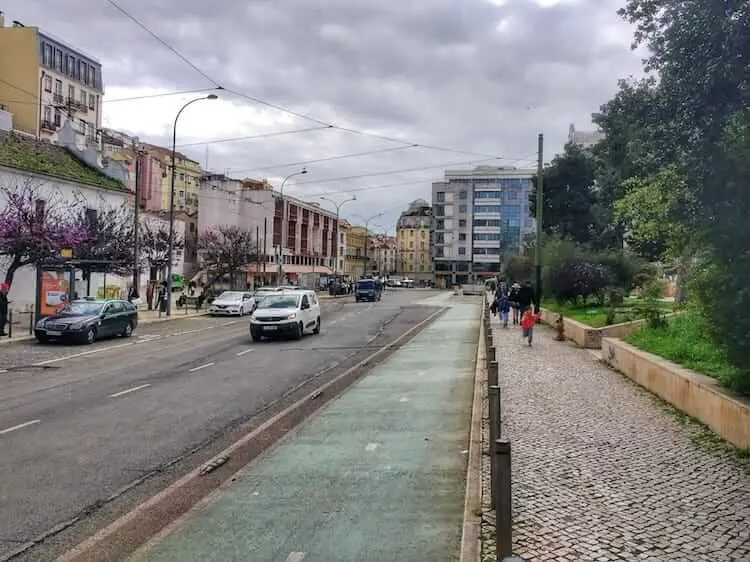
While Portugal’s capital may not be in tip-top shape, its suburbs can be downright depressing. When you take the northbound commuter train from Lisbon, the continuous sequence of high-rise buildings only ends just before you reach Sintra – after 35 minutes of council estates flying by on either side. This is where many of the people live who serve and feed you in the city centre’s tourist districts, who clean the streets and your holiday residences.

Tip these people generously. And if you see an old man or an old woman rummaging through rubbish bin: give them a fiver. It will not make a big dent in your travel budget and make their day.
6. Locks turn the other way
Or, more precisely, in the spirit of the mathematician who travels by train to Edinburgh in Mark Haddon’s all-cows-in-Scotland-are-brown joke: there are at least two locks in Portugal that counter intuitively turn “the other way” and lock you out (or in) when you turn the key left (counterclockwise). We found one in Porto last year, and one in Lisbon now.
I am only mentioning this in our notes when travelling to Portugal because we struggled, mightily, and so were the two young women who had rented the neighbouring flat in our Lisbon holiday residence. If you, on a visit to Portugal, also struggle: remember this and turn the key “the wrong way around”.
I only wish that all the other problems were as easy to solve.

